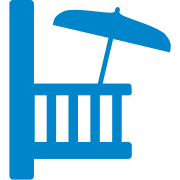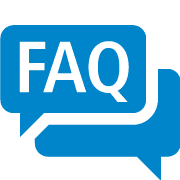Triflex cold liquid applied waterproofing, surfacing, marking and coating systems provide tough, durable and lasting results. They are simple to apply using a roller or brush and many of our systems cure extremely rapidly. In fact compared to many other competing systems, such as GRP which can take hours to cure, Triflex systems can provide a rainproof membrane in as little as 30 minutes, even in temperatures as low as -5°C. Additionally Triflex is compatible with nearly every substrate available. This often eliminates need to strip and replace previous membranes and completely eradicates to creation of waste.
While you may not have heard cold applied liquid waterproofing, it has been used in the construction industry for more than 50 years, and Triflex has been manufacturing such systems for over 40 years. Despite this, liquid plastics are still often considered as a new technology when compared to traditional and sheet applied materials. But the benefits liquid waterproofing resins can provide over these traditional materials are numerous, so what are you waiting for?
Advanced polymer chemistry
The secret to Triflex’s success is highly advanced resin technology based on advanced polymer chemistry combined with tried and tested systems. The waterproofing systems are just as effective on car parks, walkways, balconies and terraces as they are on simple and complex roofs.
The most frequently used polymer liquid resins used in the construction industry are based on polyurethane (PU), epoxy (EP), polyurea (PUA) and polymethyl methacrylate (PMMA). We manufacture resins using all of these technologies, but most of our resins are based on advanced PMMA technology. The other chemistries are often used for specialist applications or to fulfil the specific requirements of our customers.
10 Reasons to choose Triflex PMMA Systems
The advantage of Triflex PMMA systems when compared to other resins include:
- Rapid cure times allow areas to be treated quickly, minimising on-site time, systems that are rainproof in 30 minutes, trafficable in 45 minutes and overcoated after just 1 hour.
- Access restrictions and disruptions can be vastly reduced, allowing occupants or residents access to their properties in minimal time.
- Extremely short ‘rain proof' times, weather windows can be maximised even during winter months
- Totally cold applied with no need for hot works, hot boilers, gas torches or heat guns. Installers can leave site confident that the works they've completed are safe and secure, and there is no need for fire watch services
- Triflex systems cure even at low temperatures - 0°C for main areas and down to -5°C at details
- Superior hydrolosis and alkali hydrolosis (resistance to standing and ponding water and alkaline cement water)
- Higher levels of inter layer adhesion when compared to competing systems, ensuring your bond to the substrate is just as strong as the bond to the finish layer
- Can be applied at humidity levels of up to 95%
- Solvent, isocyanate and plasticiser free
- Can withstand severe chemical and mechanical load, resistant to battery acid and de-icing salts, and our systems are used on some of the highest space change car parks in the UK and abroad.
Whether you are a client, specifier or installer you will save time, money and effort with Triflex. You can rest assured that you will have a solution that offers long-term durability, integrity and security.
How it's installed
Our systems
Waterproofing, surfacing, protection and marking systems
Health and safety
Traditional and sheet materials are often applied using gas torches, gas burners and hot air guns with temperatures sometimes exceeding 1,000°C. Not only does this pose a significant health and safety risk to operatives and people nearby, but they also pose a risk of fire to the structure. The use of hot works can leave materials smouldering and then igniting even after the flame has been extinguished.
Lower your insurance premiums
Issues with hotworks are a big reason why insurance premiums have risen by so much for waterproofing and surfacing contractors. Many insurers will not provide cover for damage as a result of hotwork and even where hot works are allowed it can be hard to enforce a fire watch that includes the recommended cessation period.
It’s not surprising that many clients have banned all hot works on their properties and more and more contractors are turning to cold applied alternatives.
Remove the hazard
The first principle of health and safety is to remove or eliminate the hazard. Even when hotworks are redesigned with ‘safe zones’ a risk of fire still exists. The simplest answer is to substitute the product requiring hot works and use a Triflex cold liquid applied system instead.
A partner you can trust
Triflex waterproofing, surfacing and protection systems along with our marking and repair products are recognised throughout the world for their impeccable track record and performance under extreme conditions. Triflex is not only renowned for our high-quality waterproofing and protection solutions, but also for the exemplary level of service we provide.
All Triflex liquid applied waterproofing systems are manufactured under the international ISO 9001 Quality Management standard ensuring that our products satisfy the customers' quality requirements and comply with relevant regulations.
Whether you are a building surveyor, structural engineer, architect, main contractor or installer, all Triflex clients receive the same high levels of service and support right through to delivery of the project.
The security offered with Triflex:
- All Triflex cold applied waterproofing, surfacing, protection and marking systems are manufactured under the international ISO 9001 Quality Management, and ISO 14001 Environmental Management standards
- We provide continuous quality control during the production process, including external monitoring (BBA, MPA)
- Sophisticated test phases for all liquid applied waterproofing and marking systems prior to market launch
- Investment in the most advanced test equipment to allow in-house testing to industry standards and ensuring continuing innovation and improvement
- Full support during the design stage by the in-house specification team and on-site support by the Triflex Field Technician team during installation















